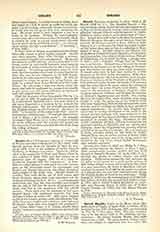

Gerard of Cremona, a twelfth-century student of Arabic science and translator from Arabic into Latin; b. at Cremona, in 1114; d. in 1187. The place and date of Gerard’s birth are not given in any document prior to the fourteenth century. Tiraboschi, in his “Storia della letteratura italiana”, is at pains to refute the contention of some Spanish writers that Gerard was born, not at Cremona in Italy, but at Carmona in Spain. While conceding that Gerard spent a good many years at Toledo, Tiraboschi shows that Cremona and not Carmona is his birthplace. In fact, the MSS. of his writings style him Cremonensis, or Chermonensis (which seems to be a corrupt form of Cremonensis). From the “Chronicle” of the Dominican Francisco Pipino, who flourished about the year 1300, we learn, besides the place and date of his birth and death, that impelled by his interest in the works of the astronomer Ptolemy, he went to Toledo, and, applying himself to the study of Arabic, soon acquired so great a proficiency in that language that he was able to translate not only the “Almagest”, but also the entire works of Avicenna, into Latin. He died in the year 1187 and was buried in the church of St. Lucy at Cremona, to which he bequeathed his valuable library. The number of books which he translated from Arabic into Latin is said by Pipino to be seventy-six. Whether he is the author of original treatises is uncertain. The works sometimes attributed to him are almost certainly to be ascribed to Gerard of Sabionetta, who lived in the thirteenth century. He must have been a man of extraordinarily wide taste in scientific matters, for he translated, according to the “Chronicle” of Pipino, works on dialectic, geometry, philosophy, physics, and several other sciences. His activity as a translator, combined with the efforts in the same line of Michael Scott, and of the group of men who formed a regular college of translators at Toledo under the direction of Bishop Raymond, brought the world of Arabian learning within the reach of the scholars of Latin Christendom and prepared the way for that conflict of ideas out of which sprang the Scholasticism of the thirteenth century. In this work Gerard was a pioneer. If the description of his moral qualities given by Pipino is not overdrawn, he was a man whose single-minded devotion to the cause of science enabled him to overcome the difficulties which in those days were inevitable in a task such as he undertook.
WILLIAM TURNER

